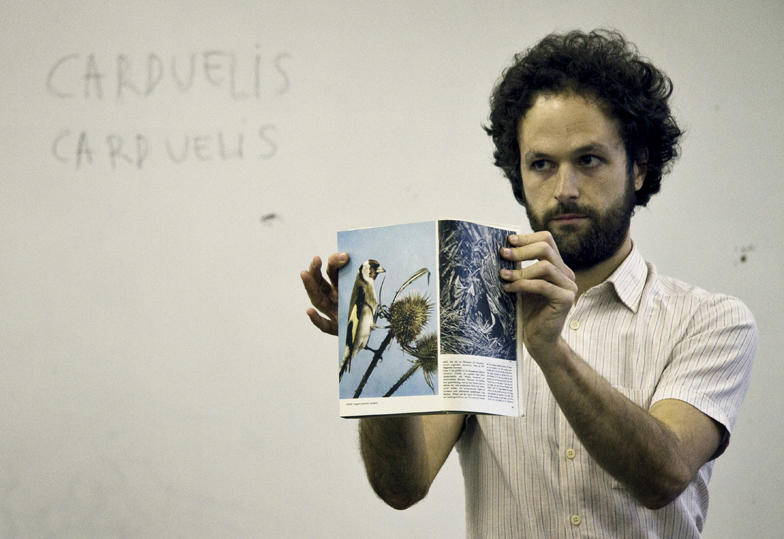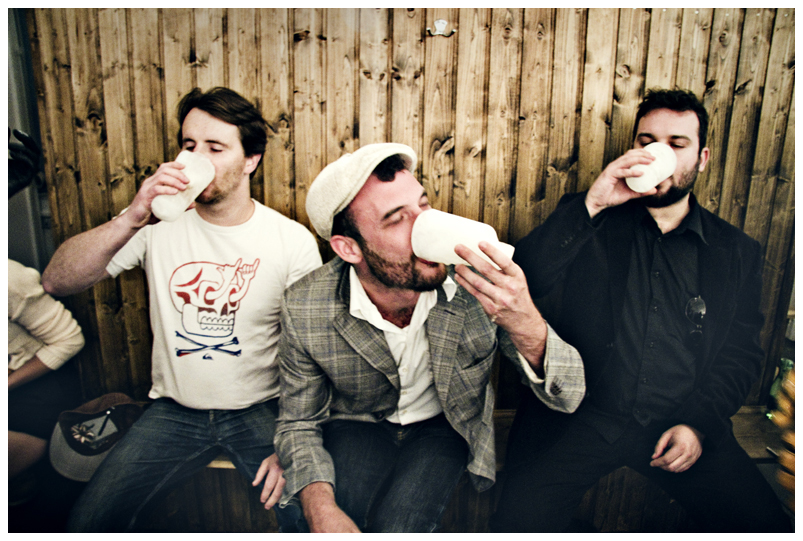Have You Met...the Grim Team
Have You Met...the Grim Team
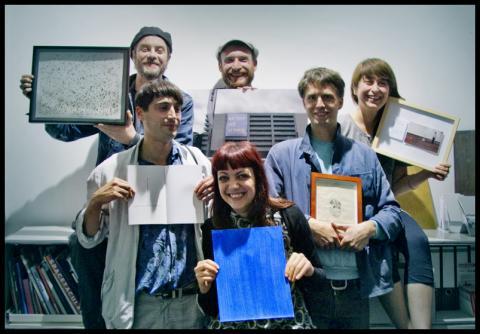
You probably have met Enrico Centonze, director of Grimmuseum, and you almost certainly have met me...but have you met the rest of the team?
WHO: Marcel Türkowsky & Francesco Cavaliere
WHAT: Curators of the sound art program WHISTLE MINOTAURE!
WHAT: Curators of the sound art program WHISTLE MINOTAURE!
In its 9th edition, WHISTLE MINOTAURE! aims to bridge sound with performance and visual art. It aims to promote the critical and theoretical discourse on sound art. The program explores how to experience a broader range of concepts and processes of contemporary art using sound as a basic medium.
Where were you when Enrico first told you about the "museum" idea. What did you think?
Marcel Türkowsky: I just came back to Berlin from Paris. I was preparing a solo exhibition, "Life Ticket", in France in collaboration with Elise Florenty. Back in Berlin, Francesco and I had our usual tea and B. A. meeting in Shangl Hangl. Well, he told me about the museum idea first. It was very intriguing. As we had been collaborating together for quite some time already, we had the conclusion to create a curatorial program. We've followed an approach which transcribes the collected ideas/research of our work into some kind of regular practice involving artists that shift these ideas into different directions. Of course, in the beginning the whole "museum" idea was more like an abstract vision, it was very difficult to grasp. However, I believed that something would unfold itself, something beyond the Berlin "Eintagsfliege".

WHISTLE MINOTAURE! 09 runs 14 September until 25 September.
NUDISM with Benjamin Altermatt, Massimiliano Bomba, and Xavier García Bardón
Image by Laura Gianetti
What was the main concept behind WHISTLE MINOTAURE!? How did you go about setting the frame of artists and interests?
WHISTLE MINOTAURE! wants to understand and cultivate new points of interaction between fine art, music/performance, and anthropology. The aim was to create a platform to experience a broader range of concepts in contemporary art using sound as a basic material. We wanted to present an overview of various artists from different generations that cross these bridges. We scripted a program for twelve exhibitions and we comissioned twelve artists to work with us. Nine solo exhibitions were realized so far including the current three-part exhibition "Nudism".
About the name..
A mythologic figure
A sound action as instruction - form
A reconsideration of Breton´s surrealist art magazine
WHISTLE MINOTAURE! wants to understand and cultivate new points of interaction between fine art, music/performance, and anthropology. The aim was to create a platform to experience a broader range of concepts in contemporary art using sound as a basic material. We wanted to present an overview of various artists from different generations that cross these bridges. We scripted a program for twelve exhibitions and we comissioned twelve artists to work with us. Nine solo exhibitions were realized so far including the current three-part exhibition "Nudism".
About the name..
A mythologic figure
A sound action as instruction - form
A reconsideration of Breton´s surrealist art magazine
WHISTLE MINOTAURE! as an imperativ move, a possible sonic reaction appearing and disappearing, entering into
a discussion of "The Open"...
Wishing to establish a borderland by pin-pointing a creature half-human half-beast...these elements living in mythology, art and sonic history, the avant-garde, program forms, and at the
same time freeing oneself from all of these: shaped the title costume for
WHISTLE MINOTAURE! exhibition series.
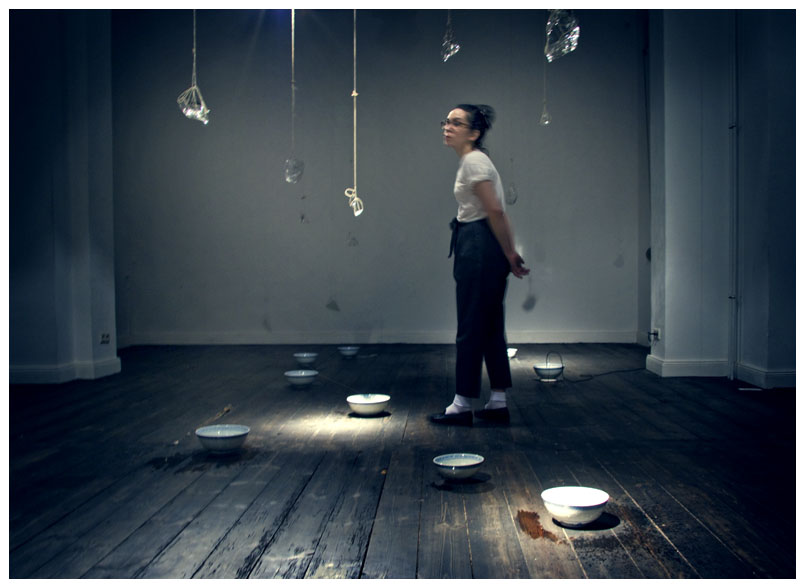
Felisa Funes in the installation of "Tomoko Sauvage", WHISTLE MINOTAURE! 05; image by Laura Gianetti
How would you describe the curating process for you? Could you give a step-by-step, like if you had to write "Curating for Dummies"?
There are a thousand ways to arrive at something. For example, it's possible to find a theme through a need, a momentary interest, an obsession, or a desire to create a problem. What follows is the research: collecting stories, attitudes, positions, and what I always call in my work "poetic weapons" that could take ideas and forms into many different directions to create more problems that manifest more metaphysical situations. The more complex the problem, the more beautiful and challenging the experience might become within.
There are a thousand ways to arrive at something. For example, it's possible to find a theme through a need, a momentary interest, an obsession, or a desire to create a problem. What follows is the research: collecting stories, attitudes, positions, and what I always call in my work "poetic weapons" that could take ideas and forms into many different directions to create more problems that manifest more metaphysical situations. The more complex the problem, the more beautiful and challenging the experience might become within.
Do you consider curating a part of your artistic practice? Do you like it or is it a necessary evil that allows you to materialize the exhibitions you want to see?
Yes. It feels like becoming a director of a theatre play or a choreographer of a dance piece. You are in a constant dialogue with the actors
and dancers. I start to love theatre and dance more and more.
Do you think working with Grimmuseum has helped your artistic practice? If yes, in what way?
Yes, In every way!
How do you see the program developing in the future?
WHISTLE MINOTAURE! has just begun. The series will twist and turn until there is nothing left to say, and then it will flourish into something else.
Favorite galleries in Berlin?
There are many interesting galleries in Berlin, and I do not have a favourite one yet.
Favorite curators/ artists in Berlin?
I am traveling a lot for my own artistic practice and research. It is not very easy to keep track of what is going on, especially in an art chaos like Berlin. A few artists of my generation whose work I am following are Tris Vonna Michel (Does he still live in Berlin?), Cyprien Guillard, Clemens von Wedemeyer, and Danh Vo; just to name a few. From the older generation of Berlin-based artists, I have always appreciated the works // thoughts of Peter Friedl, Harun Farocki, C.C. Hennix, Sven Ake Johannsson, etc...
Do you think working with Grimmuseum has helped your artistic practice? If yes, in what way?
Yes, In every way!
How do you see the program developing in the future?
WHISTLE MINOTAURE! has just begun. The series will twist and turn until there is nothing left to say, and then it will flourish into something else.
Favorite galleries in Berlin?
There are many interesting galleries in Berlin, and I do not have a favourite one yet.
Favorite curators/ artists in Berlin?
I am traveling a lot for my own artistic practice and research. It is not very easy to keep track of what is going on, especially in an art chaos like Berlin. A few artists of my generation whose work I am following are Tris Vonna Michel (Does he still live in Berlin?), Cyprien Guillard, Clemens von Wedemeyer, and Danh Vo; just to name a few. From the older generation of Berlin-based artists, I have always appreciated the works // thoughts of Peter Friedl, Harun Farocki, C.C. Hennix, Sven Ake Johannsson, etc...
WHO: Andres Galeano
WHAT: Extension Series
WHAT: Extension Series
Andres Galeano is running the performance program in Grimmuseum called Extension Series. Already in its 11th edition, the program invites two artists every six weeks. The artists are invited to work on site-specific works for seven days, develop and exhibit new works, discuss their positions with the audience, and research new methodologies in the documentation of the performance.
Extension Series 11 will open on September 19th with Skugga Guðlaugsdóttir & Marco Dorn - Johnny Amore & Irene Pascual.
Extension Series 11 will open on September 19th with Skugga Guðlaugsdóttir & Marco Dorn - Johnny Amore & Irene Pascual.
Where were you and what did you think when Enrico first told you about the "museum" idea?
We were in Prague, in a boat party organized by the Tina B. Festival (October 2009). We were a bit drunk, so I didn´t take his museum´s idea too seriously....Once we met again in Berlin and he showed me the Grimmuseum space, I realized that it was a serious proposition with big potential....
We were in Prague, in a boat party organized by the Tina B. Festival (October 2009). We were a bit drunk, so I didn´t take his museum´s idea too seriously....Once we met again in Berlin and he showed me the Grimmuseum space, I realized that it was a serious proposition with big potential....
What was the main concept behind Extension? How did you go about setting the frame of artists and interests? Why did you choose this name?
The main concept of the Extension Series is to extend the normal time/space frame usually dedicated to performance art events. Usually two artists and a theoretician are invited for each Extension. The invited artists stay a week at the Grimmuseum space, develop a site-specific performance, show it to the audience, and install the documentation of the work for a few days. This documentation process addresses how one documents ephemeral art practices and how can one work with the documentation of performance as an art work in itself. Every Extension finishes with a lecture on a relevant performance art topic chosen by the theoretician present. Extension Series is dealing with the issue of how to properly show performance art in a museum context. Every Extension has a different curatorial approach depending on which topic I consider important to research and show.
The main concept of the Extension Series is to extend the normal time/space frame usually dedicated to performance art events. Usually two artists and a theoretician are invited for each Extension. The invited artists stay a week at the Grimmuseum space, develop a site-specific performance, show it to the audience, and install the documentation of the work for a few days. This documentation process addresses how one documents ephemeral art practices and how can one work with the documentation of performance as an art work in itself. Every Extension finishes with a lecture on a relevant performance art topic chosen by the theoretician present. Extension Series is dealing with the issue of how to properly show performance art in a museum context. Every Extension has a different curatorial approach depending on which topic I consider important to research and show.
How would you describe the curating process for you? Could you give a step-by-step, like if you had to write "Curating for Dummies"?
It´s complicate for me to answer this question. I don´t really have a method....But the main thing is to see a lot of performances and documentations and to keep in mind the good ones. So, you build up a personal collection of artists that you like. Then you choose an exhibition topic and then you can invite the artists whose work fits better into it.
It´s complicate for me to answer this question. I don´t really have a method....But the main thing is to see a lot of performances and documentations and to keep in mind the good ones. So, you build up a personal collection of artists that you like. Then you choose an exhibition topic and then you can invite the artists whose work fits better into it.
Do you consider curating a part of your artistic practice? Do you like it or is it a necessary evil that allows you to materialize the exhibitions you want to see?
I would say that curating is, of course, part of my artistic practice. I mix my interest as an artist with my curatorial focuses. I "use" other artists to raise questions that I consider important and I learn a lot from their different positions and experiences. All this I can use to mature my own work as individual artist. The dark side of curating is the whole organizing process that often has less to do with doing art in a strict meaning....
I would say that curating is, of course, part of my artistic practice. I mix my interest as an artist with my curatorial focuses. I "use" other artists to raise questions that I consider important and I learn a lot from their different positions and experiences. All this I can use to mature my own work as individual artist. The dark side of curating is the whole organizing process that often has less to do with doing art in a strict meaning....
Do you think working with Grimmuseum has helped your artistic practice? If yes, in what way?
Yes, working with Grimmuseum has helped me develop contacts and professional experience.
How do you see the program developing in the future?
Extension Series will finish in November in Grimmuseum. After that we will experiment with another structure, which will be dedicating solo shows to performance artists.
How do you finance yourself:
Mainly doing performances in festivals.
Yes, working with Grimmuseum has helped me develop contacts and professional experience.
How do you see the program developing in the future?
Extension Series will finish in November in Grimmuseum. After that we will experiment with another structure, which will be dedicating solo shows to performance artists.
How do you finance yourself:
Mainly doing performances in festivals.
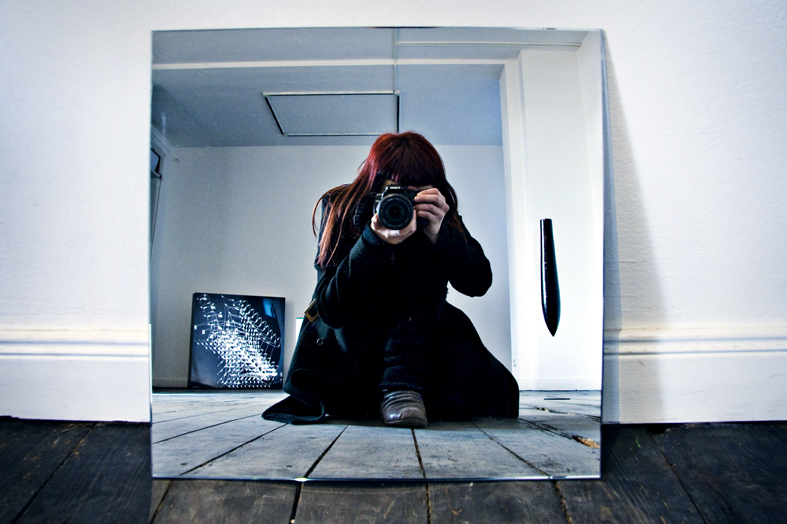
Image by Laura Gianetti
WHO: Laura Gianetti
WHAT: Photo Documentation
WHAT: Photo Documentation
Where were you and what did you think when Enrico first told you about the "museum" idea?
I remember we were in my kitchen and he had so many ideas. He was really excited about this project and in a short time, I was also involved.
I remember we were in my kitchen and he had so many ideas. He was really excited about this project and in a short time, I was also involved.
I came to Berlin in February of 2009 where I started to document the artistic events at Grimmuseum and at other venues. Here I had the opportunity to improve my technique and also to make my work known as an artist. I love Deutsch and my favorite word is Freizügigkeitsbescheinigung.
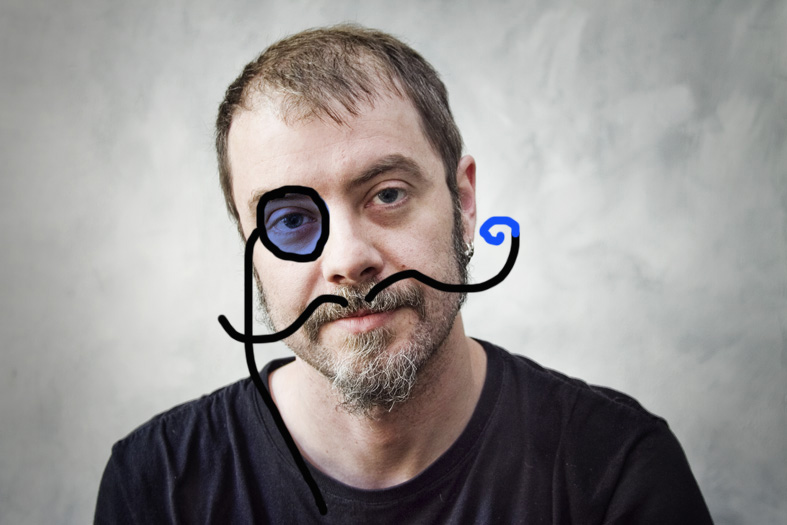
Andrea Nicolo; image by Laura Gianetti
WHO: Andrea Nicolo
WHAT: Graphic Design
WHAT: Graphic Design
Where were you and what did you think when Enrico first told you about the "museum" idea?
I was sipping a coffee in my kitchen. Then Enrico said, "I have an idea". Five minutes later we were already planning something about the design.
Starting in 2009, among other things, I developed the graphic design and the identity for Grimmuseum and Bpigs. Currently, I also work as a graphic consultant for Lettre International and as an illustrator and designer for certain Italian publishing houses and magazines. The thing I like the most in Berlin is the S-bahn Ring and my favourite German word is Gegenteil.

